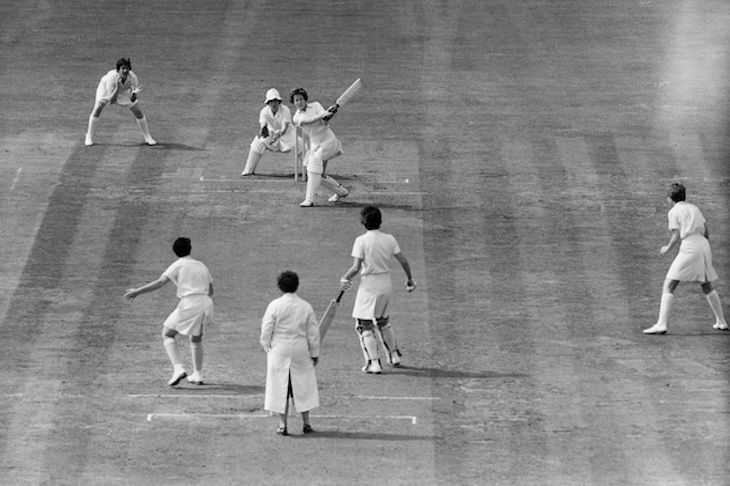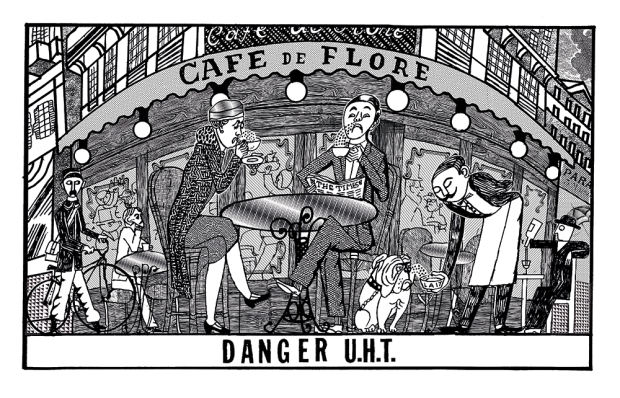I first walked into the Oval as a small boy in the early 1950s. My family home was in Brixton, only a few minutes from the ground. More than 60 years later, those early memories are still vivid. I sat on what were then very uncomfortable wooden benches with sandwiches, an apple and a bottle of Tizer. On my lap was a schoolboy scorebook in which I recorded every run. The Surrey team that won the championship for seven years in a row held me transfixed. I still believe they were the greatest county side of all time — although Yorkshire would dispute this vigorously.
The team’s supreme bowling attack was led by Alec Bedser — stately as a galleon as he ran up to the crease. His opening partner Peter Loader was as thin as a rail and fast as a whippet. To supplement this formidable pair, Surrey had the spin duo of Lock and Laker. When Bert Lock, the groundsman (no relation), swept the wicket between innings, the crowd held its breath to see if the dust rose: if it did, signalling a field day for the spinners, they licked their lips in anticipation. The prevailing wisdom was that if Lock didn’t get them, Laker would.
Surrey also had Peter May, the finest English batsman I have ever seen. One day I borrowed my father’s gold stopwatch, his most prized possession, to time the seconds it took for a May on-drive to hit the boundary pickets. But as I pressed the stop button, the watch slipped from my grasp and smashed on the stone terracing.
When I went home to confess my sin, my father, gazing forlornly at the innards of his watch, said very slowly: ‘Tell me about this Peter May.’ So I did, hoping that my evident enthusiasm would mitigate the offence. And it did, although my father was still short of one gold stopwatch.
I recount all this because next week the Oval will reach its own century: it becomes only the fourth ground in history to have staged 100 Test matches. England has several magnificent cricket grounds, most obviously Lord’s, and many more have great charm. To me, however, the Oval is special. It is a second home, a theatre of dreams and, in difficult times, a sanctuary. In the midst of turmoil it has always brought me peace of mind. Originally a market garden, it became a field of play in 1845 and went on to host some of the great events of sporting history; predominantly — but not only — cricket. The first FA Cup Final was held at the Oval in 1872 (-Wanderers beat Royal Engineers); so was the first rugby international (England beat Scotland). Athletics, lacrosse, tennis, cycling and even baseball have featured. This is unique among the world’s leading sports venues.
Over the past 30 years, wise administrators have made the Oval one of the world’s finest cricket grounds. Right from the start it has sat in the shadow of the famous gaso-meter, but otherwise much has changed. In the second world war it was first bombed, then prepared — but never used — as a prisoner-of-war camp. But through all these changes its character has remained the same.
The ground has given me so many treasured memories. In 1956 I saw Denis Compton’s Test swansong, when he defied the years and his wrecked knee to score 94 before being caught on the boundary off a sweep. Eight years later I saw Fred Trueman’s 300th Test wicket (Hawke c. Cowdrey b. Trueman). When the West Indies played at the Oval, the Caribbean Brixtonians made it a home game for the visitors. The atmosphere — noisy, affectionate and humorous — was quite simply magical. As was so much else I have seen over the years: Devon Malcolm’s destruction of the South African batting in 1994 and Kevin Pietersen’s unforgettable innings to ensure an Ashes victory in 2005.
These are mere snapshots. The Oval has hosted some of the greatest names and moments in cricket history. It was, of course, here that English cricket was said to have ‘died’ in 1882 when the ‘demon’ Spofforth (14 wickets for 90 runs) bowled Australia to a seven‑run victory. In a mock obituary, the body of English cricket was said to have been buried and ‘the Ashes’ taken to Australia. Thus cricket’s greatest and most ancient rivalry was born.
It was at the Oval that W.G. Grace scored a century on his debut for England, and Don Bradman — likely to remain the greatest run-scorer the game has known — was bowled second ball for a duck in his last Test innings. It was also where 21-year-old Len Hutton scored 364 against Australia, at that point the highest total in Test cricket.
As well as being a great batsman, Bradman was exceptionally polite. On a wet day at the Oval in the 1990s, I was with Raman Subba Row, the former England batsman. Noting that it was The Don’s birthday, we decided to call him.
He asked how the Test was going and I told him, adding that we were in the middle of a rain break. ‘What’s the weather like with you?’ I asked. ‘Dunno,’ came the reply. ‘It’s three o’clock in the morning down here!’
The Oval is often privileged to stage the final Test match in a series, which always adds spice to the contest. No one yet knows how the current South African series will develop. But what we do know is that the Oval will be full; world-class cricket will be on display; the game will be fiercely fought; the crowd (although partisan) will embrace every fine performance; and the atmosphere will be akin to a fiesta.
The Oval’s 100th Test match will be a moment for enthusiasts to savour and an opportunity to look back on the ground’s great history. Conversation will flow naturally from the game being played to the cricket and cricketers of long ago. Some will summon up — and speak as though they had been there — the 1902 Test and Gilbert Jessop’s famous hundred. Others, especially Surrey supporters, may talk of the great Jack Hobbs and the tens of thousands of runs he scored on the same turf. Yet more may recall the old groundsman ‘Bosser’ Martin, who perfect pitches broke the spirit of bowlers and delighted batsmen. Others may reflect on… well, so much else.
To be at the Oval is always an event in itself — to be there at the 100th Test match will be to savour another small slice of cricket heaven.
Lord’s is often said to be the cathedral of cricket. If that’s the case, then the Oval is surely the high altar. For me, with a lifetime of memories and devotion to Surrey, Lord’s has my admiration — but the Oval will always have my heart.
Got something to add? Join the discussion and comment below.
Get 10 issues for just $10
Subscribe to The Spectator Australia today for the next 10 magazine issues, plus full online access, for just $10.
You might disagree with half of it, but you’ll enjoy reading all of it. Try your first month for free, then just $2 a week for the remainder of your first year.














Comments
Don't miss out
Join the conversation with other Spectator Australia readers. Subscribe to leave a comment.
SUBSCRIBEAlready a subscriber? Log in